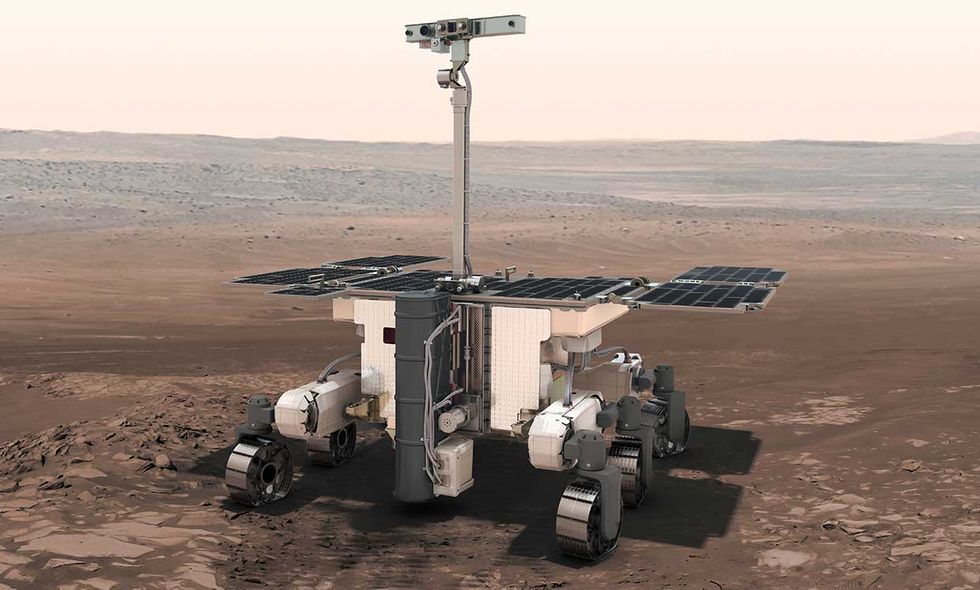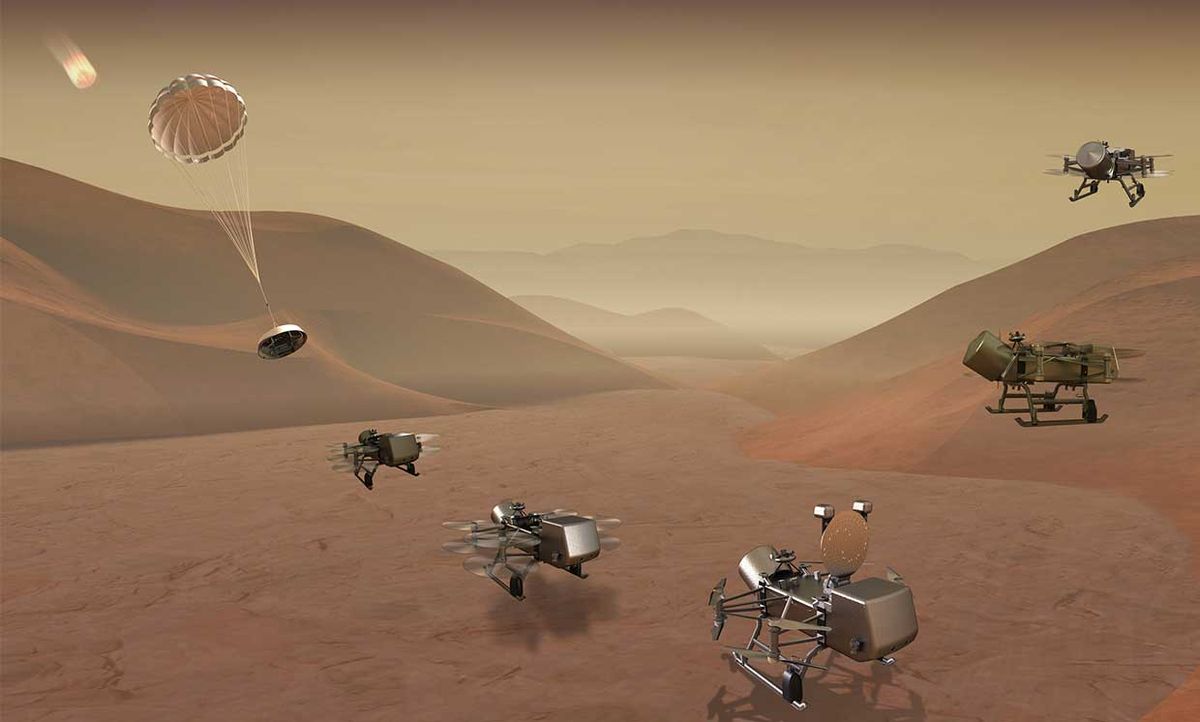Can artificial intelligence help the search for life elsewhere in the solar system? NASA thinks the answer may be “yes”—and not just on Mars either.
A pilot AI system is now being tested for use on the ExoMars mission that is currently slated to launch in the summer or fall of 2022. The machine-learning algorithms being developed will help science teams decide how to test Martian soil samples to return only the most meaningful data.
For ExoMars, the AI system will only be used back on earth to analyze data gather by the ExoMars rover. But if the system proves to be as useful to the rovers as now suspected, a NASA mission to Saturn’s moon Titan (now scheduled for 2026 launch) could automate the scientific sleuthing process in the field. This mission will rely on the Dragonfly octocopter drone to fly from surface location to surface location through Titan’s dense atmosphere and drill for signs of life there.
The hunt for microbial life in another world’s soil, either as fossilized remnants or as present-day samples, is very challenging, says Eric Lyness, software lead of the NASA Goddard Planetary Environments Lab in Greenbelt, Md. There is of course no precedent to draw upon, because no one has yet succeeded in astrobiology’s holy grail quest.
But that doesn’t mean AI can’t provide substantial assistance. Lyness explained that for the past few years he’d been puzzling over how to automate portions of an exploratory mission’s geochemical investigation, wherever in the solar system the scientific craft may be.
Last year he decided to try machine learning. “So we got some interns,” he said. “People right out of college or in college, who have been studying machine learning. … And they did some amazing stuff. It turned into much more than we expected.” Lyness and his collaborators presented their scientific analysis algorithm at a geochemistry conference last month.

ExoMars’s rover—named Rosalind Franklin, after one of the co-discoverers of DNA—will be the first that can drill down to 2-meter depths, beyond where solar UV light might penetrate and kill any life forms. In other words, ExoMars will be the first Martian craft with the ability to reach soil depths where living soil bacteria could possibly be found.
“We could potentially find forms of life, microbes or other things like that,” Lyness said. However, he quickly added, very little conclusive evidence today exists to suggest that there’s present-day (microbial) life on Mars. (NASA’s Curiosity rover has sent back some inexplicable observations of both methane and molecular oxygen in the Martian atmosphere that could conceivably be a sign of microbial life forms, though non-biological processes could explain these anomalies too.)
Less controversially, the Rosalind Franklin rover’s drill could also turn up fossilized evidence of life in the Martian soil from earlier epochs when Mars was more hospitable.
NASA’s contribution to the joint Russian/European Space Agency ExoMars project is an instrument called a mass spectrometer that will be used to analyze soil samples from the drill cores. Here, Lyness said, is where AI could really provide a helping hand.
The spectrometer, which studies the mass distribution of ions in a sample of material, works by blasting the drilled soil sample with a laser and then mapping out the atomic masses of the various molecules and portions of molecules that the laser has liberated. The problem is any given mass spectrum could originate from any number of source compounds, minerals and components. Which always makes analyzing a mass spectrum a gigantic puzzle.
Lyness said his group is studying the mineral montmorillonite, a commonplace component of the Martian soil, to see the many ways it might reveal itself in a mass spectrum. Then his team sneaks in an organic compound with the montmorillonite sample to see how that changes the mass spectrometer output.
“It could take a long time to really break down a spectrum and understand why you’re seeing peaks at certain [masses] in the spectrum,” he said. “So anything you can do to point scientists into a direction that says, ‘Don’t worry, I know it’s not this kind of thing or that kind of thing,’ they can more quickly identify what’s in there.”
Lyness said the ExoMars mission will provide a fertile training ground for his team’s as-yet-unnamed AI algorithm. (He said he’s open to suggestions—though, please, no spoof Boaty McBoatface submissions need apply.)
Because the Dragonfly drone and possibly a future astrobiology mission to Jupiter’s moon Europa would be operating in much more hostile environments with much less opportunity for data transmission back and forth to Earth, automating a craft’s astrobiological exploration would be practically a requirement.
All of which points to a future in mid-2030s in which a nuclear-powered octocopter on a moon of Saturn flies from location to location to drill for evidence of life on this tantalizingly bio-possible world. And machine learning will help power the science.
“We should be researching how to make the science instruments smarter,” Lyness said. “If you can make it smarter at the source, especially for planetary exploration, it has huge payoffs.”
Margo Anderson is senior associate editor and telecommunications editor at IEEE Spectrum. She has a bachelor’s degree in physics and a master’s degree in astrophysics.



